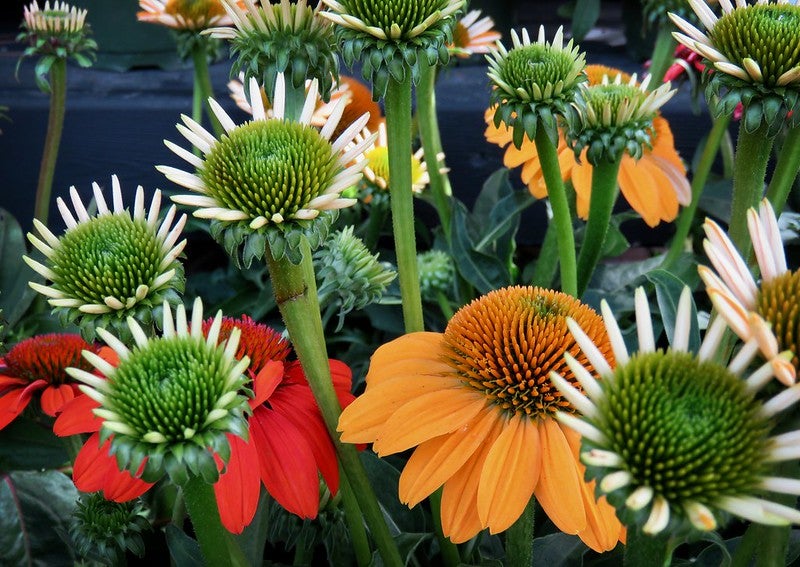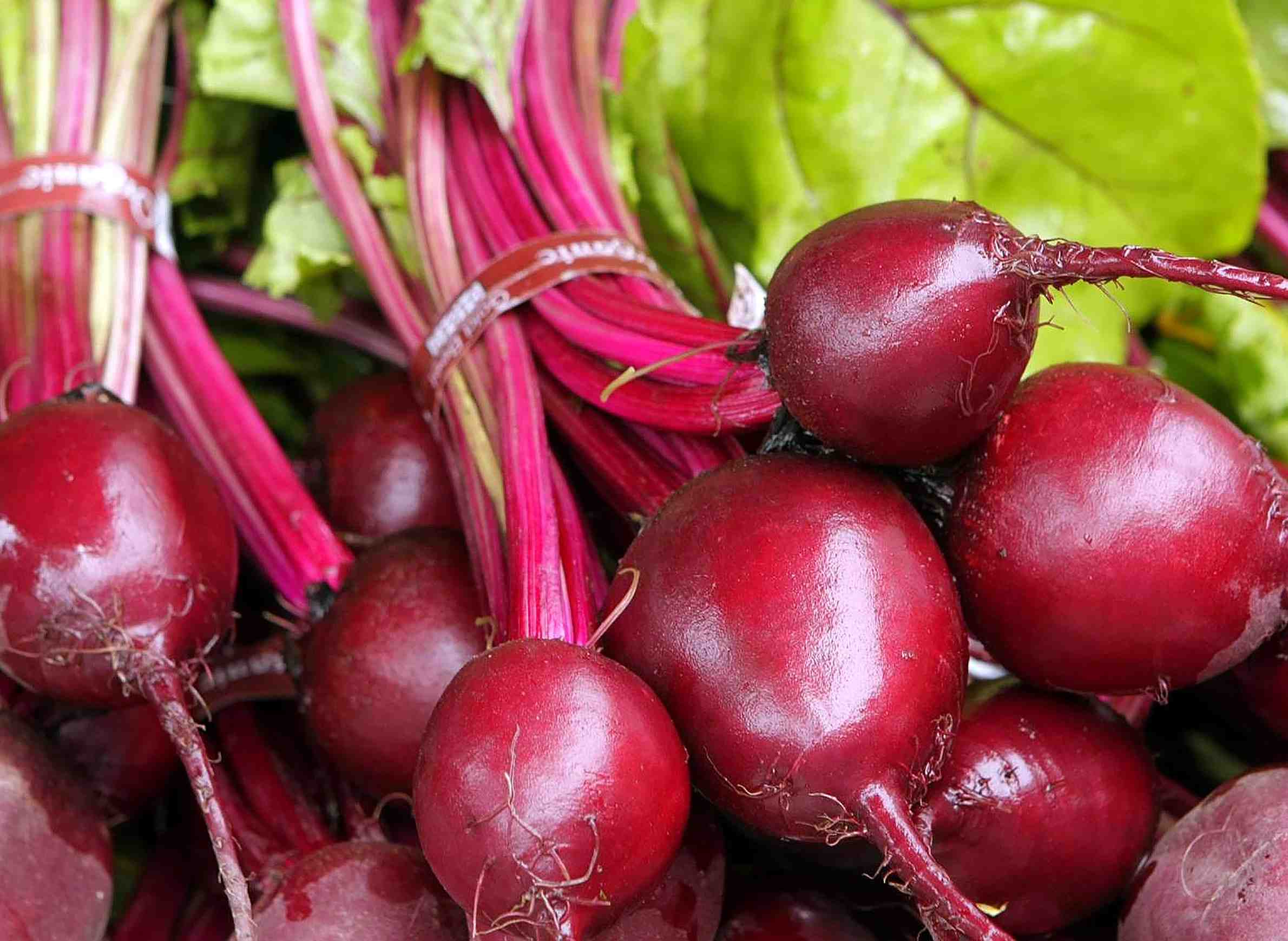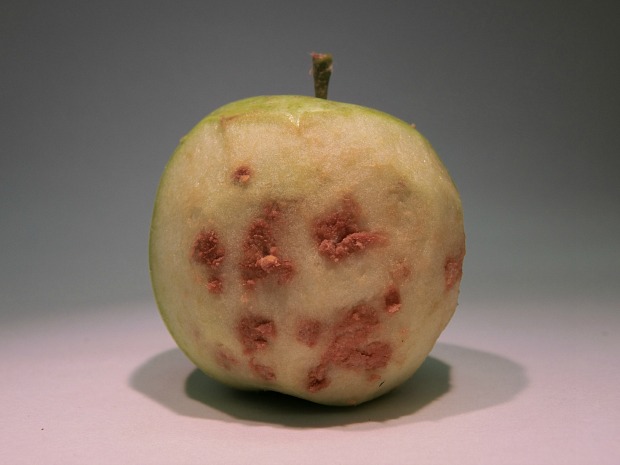If you’ve never tasted the fruit from a pawpaw tree, you’re not alone. Due to its extremely short shelf life that renders the fruit edible for only days after being picked, pawpaw is an all-too-rare treat.
But that might change.
Recently, Adam D’Angelo, director of research for Project Pawpaw, visited WPR’s “The Larry Meiller Show” to talk about efforts to introduce pawpaws to the masses.
News with a little more humanity
WPR’s “Wisconsin Today” newsletter keeps you connected to the state you love without feeling overwhelmed. No paywall. No agenda. No corporate filter.
‘Something new and exciting’
D’Angelo’s love of the pawpaw plant started at age 11 when he first saw one at Cornell University’s MacDaniels Nut Grove, an outdoor facility where forest farming is practiced.
“I saw this tree with large leaves and these alien-looking fruits that looked like big green lima beans,” D’Angelo said. “I thought I knew all the fruits. But this was something new and exciting. I went home, and I read every website I could find about pawpaws. It’s been a love affair ever since.”

Though pawpaw plants were new to D’Angelo, they’ve actually been around for a while: Spanish conquistador Hernando de Soto documented the existence of pawpaw fruit in 1541, when he saw Native Americans in the Mississippi Valley growing and eating the fruit.
Though a pawpaw looks and tastes tropical — D’Angelo compares its flavor most readily to mangoes with a hint of banana — pawpaws are North America’s largest native fruit.
But most importantly, “Pawpaws are delicious,” D’Angelo said. “The best part is everyone seems to like them. There’s no learning curve for a pawpaw. People who taste them think they’re excellent.”
If you plant it, they will come
Project Pawpaw was founded in the early 2020s as a crowdfunded research and breeding program that raises money through the sale of plants, shirts and other merchandise.
“We’ve used that money to put towards pawpaw research and towards developing new varieties,” D’Angelo said.
Under D’Angelo’s leadership, Project Pawpaw planted its first research orchard of 750 trees in southern New Jersey. Later this year, the group plans to plant two more research orchards, one in Spring Green, Wisconsin, and one in Georgia.

“The goal of the research orchards is to test all the existing varieties of pawpaw plants in different environments and climates to see which ones do the best,” D’Angelo said. “Then we’ll use that information to try to make new varieties best suited for different environments.”
Plantings will also be used to fund more research through the sale of pawpaw fruits and pawpaw frozen products that will raise the visibility of the pawpaw.
Alluding to the fruit’s greatest weakness, D’Angelo explained that one of the goals of the project is to improve the shelf life of pawpaw by breeding for traits such as skin thickness and fruit firmness.
But, as always, flavor comes first: “We want to make sure that we emphasize breeding for good fruit quality and good consumer tasting quality,” D’Angelo said.
The ‘long game’ of pawpaw planting
Unfortunately, pawpaw fruit does not come easy: Grafted pawpaw trees will typically bear fruit in about two to three years, whereas seedling trees could take about five to seven years to bear fruit. Pawpaw fruit typically ripens between mid-September and October.
D’Angelo recommended planting pawpaw plants in full sun using tree tubes. The protectors keep the wind from drying them out while giving them shade during the first year of their growth and protecting them from rabbits and lawnmowers.

Common pawpaw faux pas
D’Angelo pointed to two reasons why pawpaw plants don’t always produce fruit: “The first one is that people plant pawpaw in heavy shade where they aren’t getting enough energy to make fruit. The other is people aren’t planting genetically distinct varieties. We typically say for best pollination to plant two varieties or graft two different trees together.”
One drawback to planting pawpaw is that the plants are prone to produce what are commonly referred to as “suckers,” or tiny trees from roots that appear around the main plant.
“The best way to deal with them is a lawnmower,” D’Angelo said. “Or you can plant the trees using landscape or weed fabric. That seems to keep the suckers from coming up.”
D’Angelo also stressed that pawpaws should not be cooked.
“It will make you sick,” he said. “You can eat a bunch fresh with no ill effects, but some of the chemical compounds inside of the fruit seem to change when it’s heated up. Instead, I recommend making ice cream and smoothies from the fruit. Also, pawpaw wine and beer are great uses for the pulp.”
Party with your pawpaw
D’Angelo encouraged anyone who wants to see what all the pawpaw fuss is about to attend a pawpaw festival.
“You can go and try fruit, try products with the fruit, learn all about the trees, and even purchase a tree to go home with,” he said.

The future of pawpaw
D’Angelo is realistic when considering how long it will take for a variety of pawpaw to be widely available in grocery stores.
“Plant breeding is a slow process,” D’Angelo said. “Some of these things can take decades. So, I think the soonest you’re looking at a new variety is 15 years.”
But given the known existence of the pawpaw dates back almost 500 years, waiting a mere 15 years to see pawpaws regularly sitting alongside apples and bananas at the local grocery store seems, well, pawpaw-sitively phenomenal.





